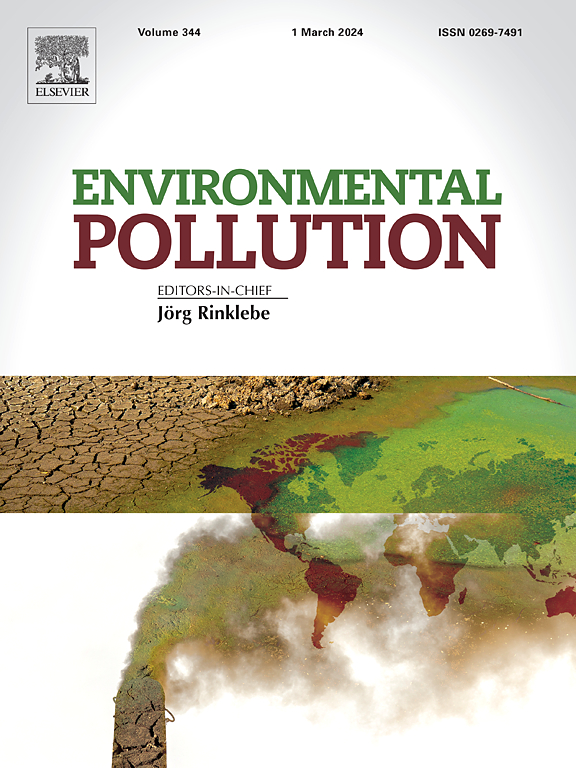Microplastics in the deep: Suspended particles affect the model species Mytilus galloprovincialis under hyperbaric conditions
IF 7.6
2区 环境科学与生态学
Q1 ENVIRONMENTAL SCIENCES
引用次数: 0
Abstract
Microplastics (MPs) are small plastic particles that result from the degradation of bigger fragments or introduced into the environment as primary particles. Their reduced size makes them available for ingestion by marine organisms, particularly in subtidal and deep-sea environments, which represent the largest sinks for MPs in the ocean. However, there is a lack of data regarding the effects of MPs in subtidal and deep-sea ecosystems. Thus, the present study aimed to assess the effects of MPs under hyperbaric conditions. Juvenile mussels, Mytilus galloprovincialis, were exposed to three concentrations of polyethylene MPs: 0.1, 1 and 10 mg/L, in a mixture of sizes (38–45, 75–90 and 180–212 μm), at different pressures: 1, 4 and 50 Bar, for 96 h. After exposure, the filtration rate, biochemical markers of oxidative stress and transcriptomic profile were analyzed to assess the effects of MPs. Results indicate that MPs affected functional endpoints, with a significant decrease in the filtration rate of mussels exposed to MPs at 1 mg/L and higher. Similarly, all tested oxidative stress biomarkers were affected in a treatment, concentration and pressure-dependent manner. RNA-seq analysis performed in organisms exposed to 1 mg/L of MPs at 4 Bar identified several affected signaling pathways (430 differentially expressed genes) including cellular senescence, the MAPK, RAS PI3K-Akt signaling pathways, apoptosis, among others. Overall, the results here presented corroborate the hypothesis that MPs affect exposed organisms under short-term hyperbaric conditions. These findings highlight the need to study MPs effects in subtidal and deep-sea taxa and address, in future studies, combined effects with other stressors such as contaminants that might be sorbed to the surface of the particles. These findings also indicate that improving hazard assessment of MPs under hyperbaric conditions is paramount to support risk assessment and the implementation of mitigation strategies.


求助全文
约1分钟内获得全文
求助全文
来源期刊

Environmental Pollution
环境科学-环境科学
CiteScore
16.00
自引率
6.70%
发文量
2082
审稿时长
2.9 months
期刊介绍:
Environmental Pollution is an international peer-reviewed journal that publishes high-quality research papers and review articles covering all aspects of environmental pollution and its impacts on ecosystems and human health.
Subject areas include, but are not limited to:
• Sources and occurrences of pollutants that are clearly defined and measured in environmental compartments, food and food-related items, and human bodies;
• Interlinks between contaminant exposure and biological, ecological, and human health effects, including those of climate change;
• Contaminants of emerging concerns (including but not limited to antibiotic resistant microorganisms or genes, microplastics/nanoplastics, electronic wastes, light, and noise) and/or their biological, ecological, or human health effects;
• Laboratory and field studies on the remediation/mitigation of environmental pollution via new techniques and with clear links to biological, ecological, or human health effects;
• Modeling of pollution processes, patterns, or trends that is of clear environmental and/or human health interest;
• New techniques that measure and examine environmental occurrences, transport, behavior, and effects of pollutants within the environment or the laboratory, provided that they can be clearly used to address problems within regional or global environmental compartments.
 求助内容:
求助内容: 应助结果提醒方式:
应助结果提醒方式:


